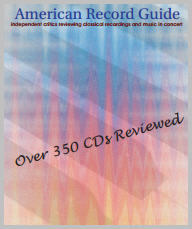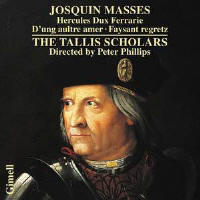Texte paru dans: / Appeared in: |
|
|
Outil de traduction ~ (Très approximatif) |
|
|
Reviewer: Peter
Loewen
And so we come to the final
release in The Tallis Scholars’ vaunted Josquin Mass cycle. The project,
which began more than 30 years ago in 1987, now accrues to 9 volumes and
includes some 18 Masses. Their release of Josquin’s De Beata Virgine and Ave
Maris Stella masses won a Diapason d’Or de l’Année in 2012. The three masses
here are as remark-able as the rest, and with distinguishing characteristics
that mark their place in Josquin’s career. While it is uncertain exactly
when he composed the Hercules Dux Ferrarie Mass, its subject is anchored to
Josquin’s short career (1503-4) as maestro at the court of Ercole
d’Este in Ferrara.
In 1502 Girolamo Sestola, a
musician employed at Ercole’s court, weighed in on the prospect of acquiring
Josquin from the Chapel of King Louis XII: “My Lord, I believe that there is
neither lord nor king who will now have a better chapel than yours if Your
Lordship sends for Josquin and by having Josquin in our chapel I want to
place a crown on this chapel of ours” (August 14, 1502).
The Mass, composed in the
duke’s honor, inscribes his name musically using a technique called
“soggetto cavato dalle vocali di queste parole”, which in this case means
the subject is “carved out” of the duke’s name using the syllables from
Guido’s hexachord to replace the vowels. Hercules Dux Ferrariae yields the
subject re-ut-re-ut-re-fa-mi-re. Josquin uses these 8 notes in his tenor
voice as he did other cantus firmuses to unify the movements of his mass,
sometime altering it through transposi-tion and augmentation. According to
Phillips, the short tune is sung 47 times; yet the work never lags into mere
repetition because Josquin weaves around it a sinuous web of counterpoint
that seems to continuously renew the composition. With pure intonation,
brisk tempos, and careful phrasing, the work continues to excite the ears
till the end of the final Agnus, where the texture opens up to a grand
finale of 6 voices and canons. Incidentally, this is precisely how Josquin
closes his Homme Armé Mass.
The D’ung Aultre Amer Mass is
outstanding for its chordal textures and explicit reference to the rondeau
‘D’ung Aultre Amer’ by Josquin’s mentor Johannes Ockeghem. In another
departure from the norm, Josquin adapts not one but both the cantus and
tenor parts from Ockeghem’s rondeau so that every movement of the mass
begins with the same sequence of pitches—enough to remind one of Ockeghem’s
song. The most striking moment comes where one would expect the Benedictus.
Josquin replaces it with the motet ‘Tu Solus Qui Facis Mirabilia’, composed
in a strictly chordal style reminiscent of the Italian Lauda to which
Josquin was first exposed while employed as a singer at the court of Milan.
To ensure the listener has made the connection here to Ockeghem’s rondeau,
he quotes not only the music but also the French text.
The Faysant Regretz Mass is
thought to have been composed around the turn of the 16th Century. And here,
too, Josquin makes use of cantus firmus, here from a rondeau composed either
by Gilles Binchois or Walter Frye—just a short, four-note fragment, which, y
Phillips’s reckoning, he bounces around the texture more than 200 times.
Again, the genius of Josquin’s counterpoint is on full display with echoing
and overlapping parts to create the impression of a continuously evolving
texture. What’s left to say? There’s no more glorious music than this, and
in the hands of the Tallis Scholars and the Gimell engineers, we hear all of
the delicate interplay between the voices, rich chords perfectly balanced,
in tune, and finely phrased. | |
|
|
|
|
Cliquez l'un ou l'autre
bouton pour découvrir bien d'autres critiques de CD |
|




